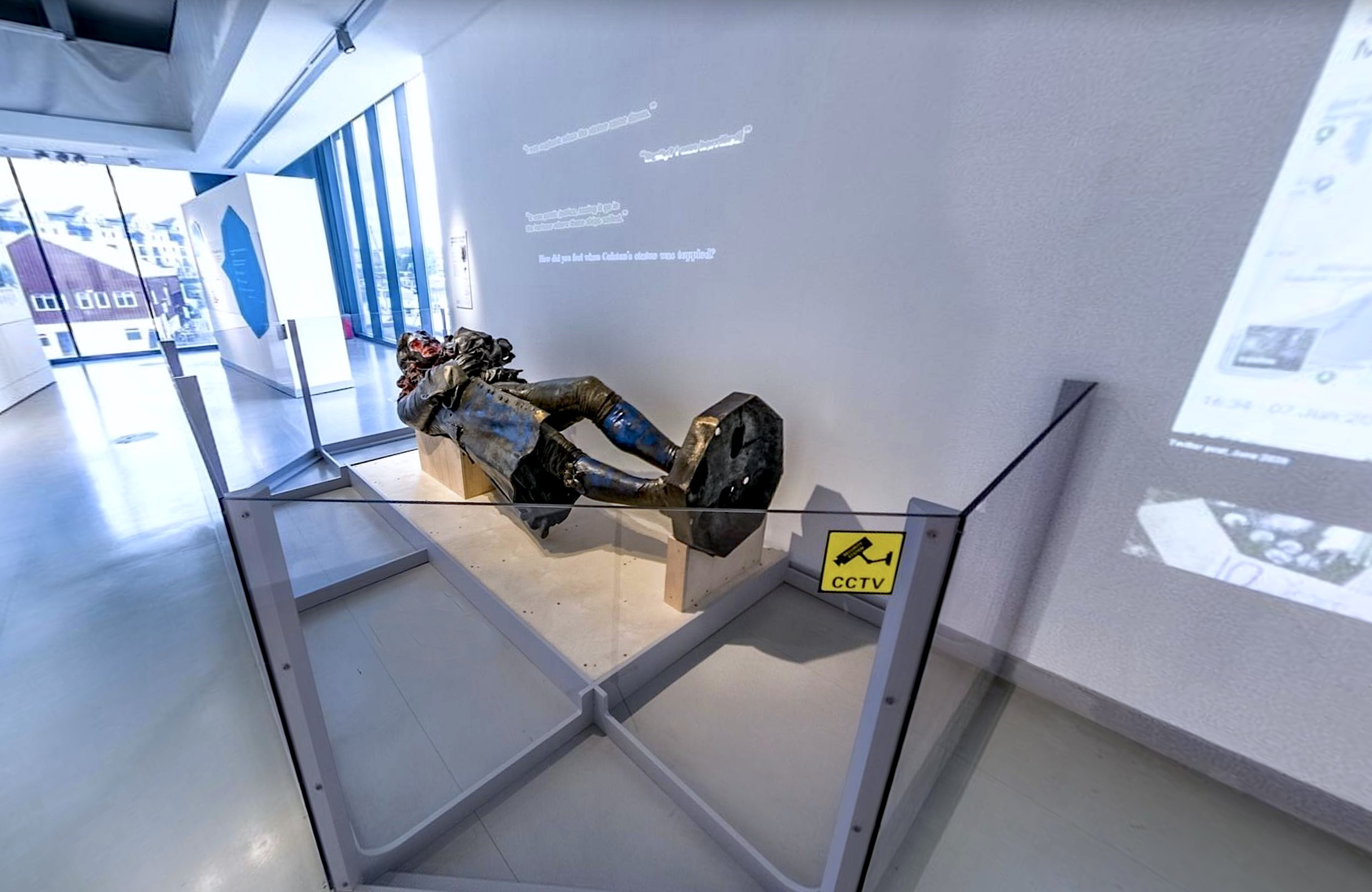A proposal to officially move the statue of transatlantic slave trader Edward Colston into the M Shed museum in Bristol as a permanent display is set for approval.
The unveiling of the toppled statue of the 17th-century slave trader has reignited controversy surrounding monuments to contentious historical figures across the United Kingdom. The statue, previously stationed in Bristol’s public view since 1895, was toppled and cast into the harbour during Black Lives Matter protests in 2020.
Now showcased at the M Shed museum, dedicated to Bristol’s history, the statue’s display has sparked polarising reactions. Save Our Statues, a group seeking to reinstate the Colston statue at its original location has orchestrated efforts to bulk-buy museum tickets, deterring visitors from witnessing the exhibit. In a Twitter statement, the group framed the protest as a stand for due process, decrying the current display as glorifying criminal violence and mob rule.
Lying horizontally at the M Shed, the statue is accompanied by a timeline highlighting its June 2020 toppling. Historian David Olusoga contextualised its significance, describing it as a pivotal artefact encapsulating Britain’s complex relationship with its involvement in the Atlantic slave trade.
Adjacent to the protest site, an anonymous party erected a plaque commemorating the anti-racism demonstrations that led to the statue’s removal. The inscription poignantly reflects on the statue’s demise, featuring verses by Bristol City Poet Vanessa Kisuule.
The statue’s toppling reverberated throughout Britain’s art scene, prompting reflection and commentary. Artist John Akomfrah expressed astonishment, while sculptor Hew Locke remarked on the unexpected turn of events. London-based artist Marc Quinn briefly replaced the Colston statue with a sculpture of a protestor, drawing attention to questions of representation and allyship.
In response, artist Thomas J. Price criticised Quinn’s intervention in an essay, advocating for support towards emerging Black artists for such projects. The saga surrounding the Colston statue underscores the ongoing dialogue around historical memory and public art’s role in shaping collective narratives.
The statue of Edward Colston in Bristol is intertwined with the city’s complex relationship with its past, particularly its involvement in the transatlantic slave trade. Erected in 1895, the statue was intended to honour Edward Colston, a prominent figure in Bristol’s history and a benefactor to the city.
Colston, a merchant and philanthropist, was involved in the Royal African Company, which played a significant role in the slave trade during the 17th century. While Colston’s charitable contributions to Bristol were notable, his wealth was amassed through the exploitation of enslaved Africans.
For decades, the statue stood as a symbol of civic pride, celebrating Colston’s philanthropy while largely ignoring his involvement in the slave trade. However, as awareness of Britain’s historical ties to slavery grew, so too did calls for the statue’s removal.
In June 2020, during global protests against racial injustice sparked by the killing of George Floyd in the United States, demonstrators in Bristol took action. The Edward Colston statue was torn down from its pedestal and thrown into the harbour by protesters who saw it as a glorification of slavery and colonialism.
The toppling of the statue ignited a nationwide debate about the commemoration of historical figures linked to slavery and racism. Some argued for the statue’s restoration, citing its historical significance, while others supported its removal as a necessary step towards confronting Britain’s past and addressing systemic inequalities.
Following its removal, the fate of the statue remained uncertain. It was briefly replaced by a sculpture of a protester created by artist Marc Quinn before being retrieved from the harbour and placed in storage.
In 2021, the statue was unveiled at the M Shed museum in Bristol, lying horizontally as part of an exhibit exploring the city’s history and its connections to the slave trade. Its display continues to provoke discussions about memory, commemoration, and the legacies of slavery in contemporary society.
The history of the Edward Colston statue reflects broader questions about how societies remember and reckon with difficult aspects of their past, and the ongoing struggle to confront historical injustices and promote reconciliation.

